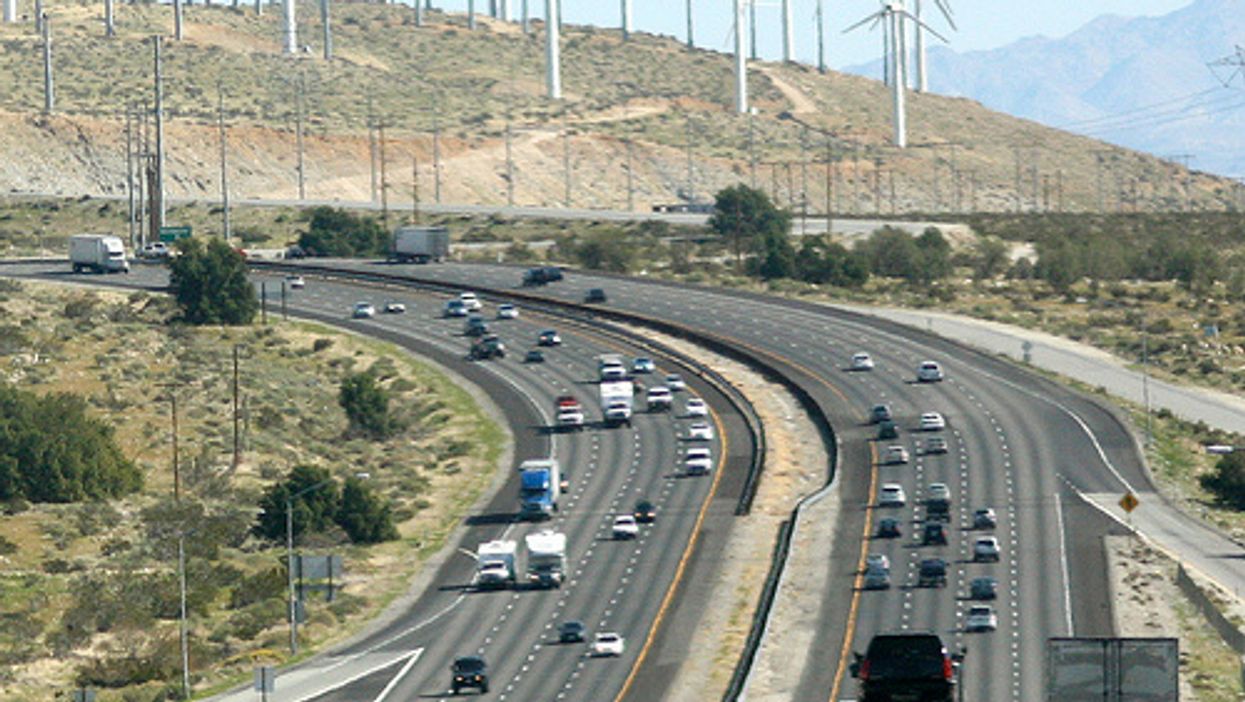To Fight Russian Aggression, Build More Clean Energy Capacity
Russian attacks on Ukraine have spiked the already high price of oil. But going up with that are the economic incentives to ditch this primitive fuel — the environmental reasons being well known.
Russia provides about 40 percent of Europe's imported gas, and its squeeze on supply has forced some factories to cut back on production. The case for moving to renewable energy grows only stronger.
The CEO of the Portuguese utility EDP made this point on CNBC Europe. "These are (indigenous) ... resources — wind, solar — that we have in Europe," Miguel Stilwell de Andrade said. "We need to accelerate (their development) and do it much faster."
Americans, meanwhile, can dismiss conservative claims that President Joe Biden has set back America's "energy independence." Policies to replace fossil fuels with low-carbon energy have hardly shut off the flow of domestic oil and gas. Actually, the U.S. became the world's top exporter of liquefied natural gas this year.
On a related topic, Biden's infrastructure bill set aside $6 billion to stop the premature retirement of nuclear plants. Another $2.5 billion is going for work on advanced nuclear technologies. Biden backed this zero-carbon energy source while fighting off some opposition from the left.
Germany's outsized dependence on Russian oil resulted from former German Chancellor Angela Merkel's unwise decision years ago to shutter her country's nuclear plants — and replace that source of power with Russian natural gas. (Imagine Europe launching its largest fossil fuel project in the year 2022.)
In retaliation for Russia's assault on Ukraine, Germany has suspended approval of Nord Stream 2, an underwater pipeline designed to transport Russian natural gas to Germany. Good for the new chancellor, Olaf Scholz.
Some Europeans are reportedly dealing with the convulsion in fuel prices by installing solar panels and burning wood for heat. Hooray for solar. (Boo for wood-burning, though understandable in an emergency.)
Clean energy means more energy, which, when added to improving green technology, eventually means less-expensive energy. By 2020, solar already provided cheaper power than that from plants fired by coal or natural gas in most countries, according to the International Energy Agency.
The U.S. has just passed the milestone of 200,000 megawatts of utility-scale clean energy capacity, according to the American Clean Power Association. Do you know which state installed the most wind and solar power capacity last year? Texas.
Natural gas prices were, of course, surging before Russia started pummeling Ukraine. That reflected an upturn in demand as the COVID-19 pandemic started to retreat.
But companies in Europe that had made long-term agreements for renewable energy at fixed prices found themselves in a far better place, The Wall Street Journal reports. Orange SA, the huge French telecom company, for one, is securing power from nearby solar and wind farms, as well as its own installations. It plans to obtain half its energy from renewable sources in three short years.
Such businesses, George Bilicic, head of power and energy at the investment banking firm Lazard, said, "should be better positioned than others given current fossil fuel price spikes."
Steep gas prices are, of course, a great selling point for electric cars, not that they need it at this point.
Moving the world away from fossil fuels would erase Russian President Vladimir Putin's biggest nonnuclear weapon. After all, oil and gas accounted for 39 percent of Russia's budget revenue and 60 percent of its exports in 2019.
We, on our part, must make major investments in power grids to accommodate the diverse types of low-carbon energy. But there's nothing like international turmoil at the hands of a distressed country run by an unstable leader to provide a major push in that direction. Let's get pushed.
Follow Froma Harrop on Twitter @FromaHarrop. She can be reached at fharrop@gmail.com. To find out more about Froma Harrop and read features by other Creators writers and cartoonists, visit the Creators webpage at www.creators.com.




